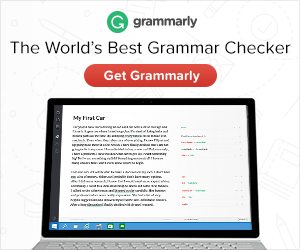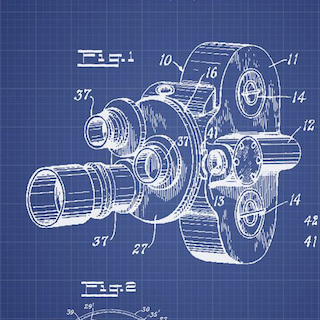Differences in Warranties & Indemnities in Legal English

Differences in Warranties & Indemnities in Legal English
Indemnities
An indemnity is defined as a “legal protection against liabilities arising from one’s actions” In other words, one party (Party 1) promises to another party (Party 2) to accept the risk of the loss that Party 2 might suffer in a particular situation.
Indemnities are used by buyers to protect themselves against matters that arise out of their control. They are also used to cover known risks (to be distinguished from warranties, which are used to protect against unknown risks).
Warranties
A warranty is a contractual statement of a fact by one party to another, asserting that a specific state of affairs is true. Put simply, one party (Party 1) must promise that their statements are true to another party (Party 2).
The objective of a warranty is to allocate risk. The warranting party provides an assurance that the information set out in the warranty is true, and verifies this by assuming responsibility for the harm if that warranty is (or becomes) untrue.
The dictionary that every law firm must have.
Area of law: Commercial Law
Section 4 – Warranties and Indemnities
Listening task: Take notes.
Timing: This listening is 6 minutes long.
Lawyer: Good afternoon, everyone. My name is James Styles and I work in the corporate department of Irvine Walker LLP here in Chatsworth. I’m here today to talk to you as part of your LPC course on the importance of warranties and indemnities in a typical commercial contract. As you know, your future employers value practical skills and a solid knowledge of how warranties and indemnities work is absolutely vital to having strong drafting skills.
Let’s imagine that the context of our discussion is a share purchase agreement, or an S.P.A., as we usually call it for short, which is probably the type of contract that I spend most of my time on. We’ll begin with warranties. A warranty is an assurance given by the seller in the acquisition agreement that a certain state of affairs exists. In practice, a normal acquisition agreement will contain a long (1) _____ of general warranties covering almost every aspect of the target business, including financial accounts, assets, contracts, borrowings, real and intellectual property, (2) _____, regulatory matters, employees and pensions. In addition there are usually concerns specific to the company or business being acquired, and there will therefore also be specific warranties covering these matters. Therefore, the warranties are effectively a checklist of matters which may concern the purchaser.
If any of this checklist of assurances turns out to be untrue, in principle the purchaser will have a claim against the seller for breach of contract and the remedy of the payment of damages to compensate for the loss (3) _____ . However, in practice this is far from simple. The calculation of the amount of damages payable for breach of a warranty is subject to the usual common law restraints. These include the principle of ‘remoteness’, meaning any loss that does not flow naturally from the breach of warranty is excluded.
Another principle that the court will take into account when calculating damages is the Hadley Rule. This says that any loss (4) _____ from the breach which was not fairly and reasonably foreseeable when the parties made the contract is irrevocable. Two other important restraints are the fact that only nominal damages can be awarded where no actual loss has been caused to the purchaser by the breach of warranty and the fact that the party who suffers loss must use reasonable endeavors to minimize, or (5) _____ his or her loss wherever possible. The normal measure of compensation on a share sale is for the purchaser to be awarded the difference between the value of the shares in the company if the warranty had been true and their actual value; i.e. the difference in the value of the shares with and without the matter which caused the breach of warranty.
In complete contrast, an indemnity is a promise to indemnify, meaning to reimburse the purchaser in respect of a designated type of (6) _____ if it arises. For example, if the purchaser of a business is concerned that a particular employee is likely to bring an Employment Tribunal claim against the company, but the seller provides an assurance that if it happens the claim would be easily defeated, the parties might agree that the seller indemnifies the purchaser against the costs of defending such a claim, and against the costs of meeting any judgment awarded against the company.
Crucially, unlike warranties, if an indemnity has been given and is later triggered by an event, the actual loss must be reimbursed to the purchaser, pound for pound. The principles of calculating damages applied to the breach of a warranty do not apply, unless (7) _____ into the acquisition agreement by the seller. So, in our example, if the employee successfully brought a claim of unfair (8) _____ and was awarded £10,000, the seller would be required to pay the purchaser £10,000 plus his or her legal costs, probably costs of lost management time, plus interest.
Now then, all of this assumes that the seller remains capable of meeting the costs of a judgment, and in the jurisdiction. If, for example, the seller immediately emigrates to a country which doesn’t recognise or (9) _____UK judgments, in practical terms any warranties and indemnities will not be worth the paper any are written on. For this reason, at least part of the purchase price is often held in a joint bank account the parties’ solicitors and not released for a certain period after the acquisition in case it’s required to meet warranty and indemnity claims. This is called the (10) _____ mechanism.
Comprehension Questions
Answer the following questions in your own words.
In practice, a normal acquisition agreement will contain a long (1) _____ of general warranties covering almost every aspect of the target business, including financial accounts, assets, contracts, borrowings, real and intellectual property, (2) _____ , regulatory matters, employees and pensions.
If any of this checklist of assurances turns out to be untrue, in principle the purchaser will have a claim against the seller for breach of contract and the remedy of the payment of damages to compensate for the loss (3) _____ .
Another principle that the court will take into account when calculating damages is the Hadley Rule.
See Below – Hadley Rule.
This says that any loss (4) _____ from the breach which was not fairly and reasonably foreseeable when the parties made the contract is irrevocable.
Two other important restraints are the fact that only nominal damages can be awarded where no actual loss has been caused to the purchaser by the breach of warranty and the fact that the party who suffers loss must use reasonable endeavors to minimize, or (5) _____ his or her loss wherever possible.
In complete contrast, an indemnity is a promise to indemnify, meaning to reimburse the purchaser in respect of a designated type of (6) _____ if it arises.
The principles of calculating damages applied to the breach of a warranty do not apply, unless (7) _____ into the acquisition agreement by the seller.
So, in our example, if the employee successfully brought a claim of unfair (8) _____ and was awarded £10,000, the seller would be required to pay the purchaser £10,000 plus his or her legal costs, probably costs of lost management time, plus interest.
If, for example, the seller immediately emigrates to a country which doesn’t recognise or (9) _____UK judgments, in practical terms any warranties and indemnities will not be worth the paper any are written on.
This is called the (10) _____ mechanism.
New Vocabulary
a warranty
an indemnity
share purchase agreement
a state of affairs
the target business
an acquisition agreement
remoteness
the purchaser
to award
pound for pound
as long as
the Hadley Rule
to calculate damages
to turn out
We can teach you legal English.
What is the Hadley Rule?
Hadley v Baxendale 9 Exch. 341 (1854)
Is a leading English contract law case which laid down the principle that consequential damages will be awarded for breach of contract only if it was foreseeable at the time of contracting that this type of damage would result from the breach.
Issue. Are Defendants liable to Plaintiffs for damages suffered by Plaintiffs due to lost profits?
Facts. Plaintiffs operated a mill, which they were forced to shut down when the crank shaft of their steam engine broke. They contacted the manufacturer of the engine, W. Joyce & Co. (Joyce), and Joyce agreed to make a new shaft from the pattern of the old one. Therefore, a servant of Plaintiffs went to the office of Defendants, common carriers, to have the crank shaft taken to Joyce. Plaintiffs’ servant told Defendants’ clerk that the mill was shut down and the shaft must be sent immediately. The clerk informed Plaintiffs’ servant that if the shaft were given to them by twelve o’clock any day, it would be delivered by the next day. Plaintiffs took the shaft to Defendants the next day before noon. Due to Defendants’ neglect, the delivery to Joyce was delayed, and Plaintiffs did not receive the new shaft for several days after they should have received it.
Held. No. A nonbreaching party is entitled damages arising naturally from the breach itself or those that are in the reasonable contemplation of the parties at the time of contracting. Here, while the breach by Defendants was the actual cause of the lost profits of Plaintiffs, it cannot be said that under ordinary circumstances such loss arises naturally from this type of breach. There is a multitude of reasons for a miller to send a crank shaft to a third party. Defendants had no way of knowing that their breach would cause a longer shutdown of the mill, resulting in lost profits. Further, Plaintiffs never communicated the special circumstances to Defendants, nor did Defendants know of the special circumstances.
Discussion. Damages are limited to those that arise naturally from a breach and those that are reasonably contemplated by the parties at the time of contracting.
Writing Activity
Area of Law: Contracts
Writing Task: Draft a Warranties Section for a contract related to an M&A Agreement.
Length: 3-4 warranties of 50-100 words.
Example Clauses
Common Seller Warranties
The seller is authorised to _____ in all jurisdictions within or outside the United Kingdom.
A. trade
B. business
C. negotiate
This warranty confirms that the seller is authorised to do business within or outside the United Kingdom.
The seller has the necessary power and authority to _____ and perform its obligations under the share purchase agreement.
A. celebrate into
B. enter into
C. trade into
The seller has the requisite authority to enter into the share purchase agreement and perform the obligations under it (ie the seller must be a shareholder of the target company and afforded powers in relation to those shares by a valid Shareholders’ agreement).
The seller has no _____ a company likely to be or become competitive with the target company.
A. interest in
B. interest at
C. interest on
This warranty confirms that the seller has no interest in any business in competition with, or likely to become competitive with, the target company. This is protected further in the share purchase agreement through the use of restrictive covenants.
The seller has made _____ disclosure in the disclosure letter.
A. full but fair
B. full or fair
C. full and fair
The seller has made relevant disclosures in the disclosure letter where possible. If a seller fails to disclose a relevant matter in respect of the warranties, they may be sued by the buyer for breach of warranty.
The seller is the _____ owner and registered holder of the shares.
A. sole
B. solo
C. only
This warranty confirms that the seller is the only and true owner of the shares being sold.
The target company and its solvency
Information given by the seller about the _____ company is true and complete.
A. trade
B. target
C. negotiated
This warranty confirms that information that is given by the seller to the buyer about the target company is true and correct (ie who the directors of the company are and when the company was incorporated).
The target company is incorporated, validly existing and in good _____ .
A. faith
B. standing
C. health
In order for a share purchase transaction to take place, the target company must be properly incorporated and in good standing. This means that the company must be formally recognised by Companies House. To be ‘in good standing’ means that the company has continued to exist since it was incorporated.
No order has been made or is due to be made for the ____ of the target company.
A. winding down
B. winding up
C. winding by
The target company must not be subject to a winding-up order (ie it must not be in the process of dissolving its business).
No administrative _____ has been appointed in relation to the target company.
A. trade
B. business
C. negotiate
This warranty confirms that no receiver or administrative receiver has been appointed in relation to the target company. An administrative receiver is authorised to take custody of charged assets, run the company’s business and dispose of its assets in the event of insolvency.
No statutory demand has been served upon the target company that has not been paid _____ or withdrawn.
A. in full
B. up full
C. back full
A statutory demand is a written demand for the payment of a debt. As long as the target company is solvent (ie able to pay off its debts) a statutory demand should not be served upon it.
Real & Intellectual Property
The target company is the sole owner and _____ user of its intellectual property rights.
A. only
B. exclusive
C. full
The target company should be the only and true owner of its intellectual property rights. The target company should have exclusive use of these rights.
There are no claims of _____ existing against the intellectual property rights used by the target company.
A. infringement
B. break
C. non-performance
This warranty confirms that there are no claims of infringement existing against the intellectual property rights used by the target company.
All agreements or understandings relating to the target company’s intellectual property rights are not the subject of any _____ .
A. battles
B. infringement
C. disputes
This warranty ensures that any agreements or understandings in relation to the target company’s intellectual property rights (ie licensing agreements) are not the subject of any disputes.
The target company owns or is _____ to use all necessary software.
A. borrowed
B. assigned
C. licensed
If the target company uses software in the course of its business, it should have the necessary licenses to continue using that software.
The properties _____ are the only land and premises owned, used or occupied for the purposes of the target company’s business.
A. disclosed
B. told
C. said
The seller should ensure that any real property owned, used or occupied by the target company are duly disclosed to the buyer.
General Vocabulary Review
to boil down to
to have a bearing on
high-profile
to hand down
a party
the run up to
a relationship of employment
to take the plunge
a corporate advisory company
a claimant
to take place
evidence in court
to trigger off
due to depart
to hear
legal advice
to check out
staff
relevant statute
further declarations
to get things in writing
to hang on
to apply law
infringement
a dispute
healthy profit
a contract of sale
a straightforward case
an assignment
to draw up
jurisdiction
on the grounds of
to have copyright in
to issue a claim
a living wage
accounts
to blame
to rip off
blatantly
to have a word with someone
as long as
a sole trader
personal assets
a legal issue
the cost
the retail price
just around the corner
to cook the books
in terms of
to drop dramatically
a stall
to move abroad
a logo
not a trace
to set up
a limited company
to bump into
to bear in mind
in conjuction with
a binding contract
to spot
a sternly-worded letter
to sky dive
a partner
a written agreement
governing law
engaged in
a number of
a sum
to dismiss
trademark
full and final
to win a case
a small fortune
business premises
a bit shabby
new competition
to waive
to put a charge
to lead to
to show up
maternity leave
to deal with
the case
to harm
to add fuel to the fire
a fee
reasonable legal fees
to add insult to injury
a signature
complied with
amid a storm
Indeed
just bear with me
royalty
scrutiny
to settle
to sue
to invoice / an invoice
a tenant
a landlord
self-employed
substandard work
breach of contract
to turn up
to earn a living
bankrupt
a bailiff
a battle
a solicitor
a bill
conveyancing
a mortgage lender
to borrow
a formal written warning
loopholes
clamp down
accounting
to sign and date
to sack / to fire
straight away
income
to take to court
small claims court
to take out a loan
legal interest in an asset
a claim
to hold by a third party
to seize
outcome of a case
hasn’t paid a penny
sold at auction
to follow up
to carry out
to chase up
a matter
to draw up
ownership
a total sum
to squeeze in
MPs
extent of
to deflect
foreseeable future
wrongful
an installment
to draw conclusions
a deposit
specific performance
bits and pieces
a stamp duty
the facts
to complain
to award
to go ahead
interest and costs
to struggle
a Charging Order
to enforce a judgment
to draw a line under
to draw a line under something
to cover
to threaten
damages or losses
to purchase
About the Author
Eric Froiland
Eric is a legal English teacher from the United States and has been based out of Bogota, Colombia for the last 10 years. He is the owner and founder of Legal English Innovation SAS, which is recognized as the top legal English academy in Colombia and is an official Test of Legal English Skills (TOLES) examination center.






